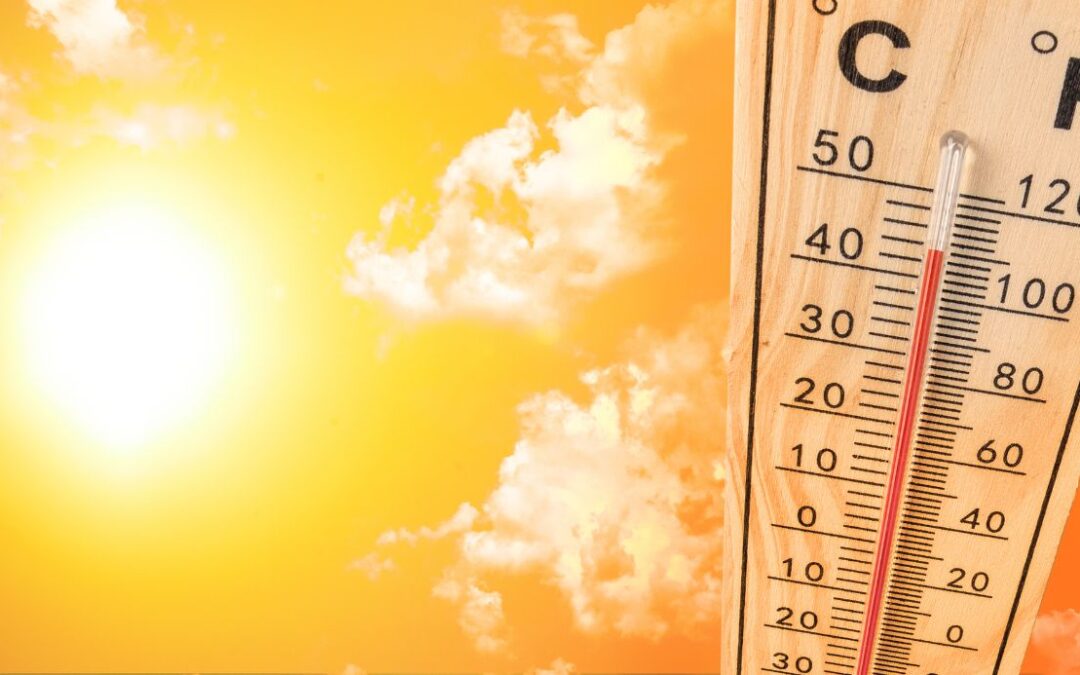Workers in industries like agriculture, construction, outdoor events, amusement parks, and road maintenance have long been aware of heat-related health risks, but in the last decade, with rising temps, some states and industries have experienced increased heat-related injury and death rates. Additionally, heat-related injuries in indoor environments without climate control have seen both increased risk and additional regulation by OSHA. Understanding the environmental factors that lead to today’s heat-related work injuries helps safety managers and employees identify factors that must be mediated to maintain a safe work environment.
Heat Risks On the Rise
In 2021, 800 people died across Oregon, Washington and British Columbia in a 2021 heat wave when temperatures reached 115 degrees as far south as Redding, California. These deaths prompted changes to worker heat guidelines in the affected states and across the country, resulting in a more systemic look at the factors that lead to heat injury and death.
Colorado Responds
Colorado has rarely experienced the particular mix of factors that impacted the Pacific Northwest in 2021, and in general has had fewer heat-related deaths than states like Arizona and Nevada. Given changes to climate and a record of increasing risk, state legislators passed the Colorado Agricultural Labor Conditions mandate in January, 2022.
Colorado’s agricultural labor conditions rule 3 clarifies that a worksite that a forecast of 80 degrees meets the threshold for heat protection requirements to apply. What complicates heat mitigation now more than in previous generations is that air temperature is not the only factor that matters when it comes to worker health. Humidity, sunlight, air speed and air temperature go hand in hand to create heat risk, particularly when factors stay in play for multiple days. Additionally, heat sources in a work area can change an otherwise temperature-safe environment quickly. Ovens, generators, and heat-reflective surfaces such as concrete, glass and metal, or heat-retaining environments such as the interior of a parked vehicle can increase risks for workers.
OSHA’s Guidance
OSHA describes Two heat sources that contribute to the risk of heat-related illness.
- Environmental heat is produced by warm or hot surroundings (as described above)
- Metabolic heat, generated by the body, and that is related to workload (physical activity).
As workload increases, so does metabolic heat. Many states are moving toward a new standard of measurement called “Wet Bulb Globe Temperature Index” which takes into account multiple heat related stresses on the body. Factors include the previously mentioned air temperature, air speed, humidity, and radiation, but these factors don’t just relate to the external environment outside one’s body. The worksite is a dynamic space, and employers must take into account personal and worksite factors that increase risk. These can include the use of clothing or protective gear that can reduce the body’s ability to lose excess heat as well as individual risk factors like lung or heart conditions, and overall physical health.
An example of a worksite factor could be a vehicle sitting in the sun or an oven or kiln used to bake bread or make ceramic goods. Periodic short-term exposure to the heat source can increase the worker’s risk of heat stroke, even if the environmental temperature is within what would ordinarily be considered safe. On hot days the heat source can act as a “threat multiplier” adding risk above and beyond personal, environmental and worksite factors.
How can Employers Adapt?
Monitor environmental factors with a wet bulb globe temperature meter on site. Adapt the strenuousness of activity to conditions using the Metabolic Heat and Workload chart.
Provide cooling stations and a system for workers to check in with one another. A coworker may be able to spot the signs of risk before the individual will, so self-reporting and a team approach go hand in hand to mitigating risk.
Stay on top of research. Colorado has a program in climate and health that conducts research and trains practitioners. Following the latest will help employers adapt ahead of regulatory measures to avoid risks.
Make a plan. As with any safety work, having a clear, actionable plan is the bedrock of a safe work environment. Include environmental factors and temperature safety in safety briefings, and make updates as on-site factors change. Know where you can take injured workers, and list quality providers, including Midtown Occupational Health on your provider list.
Heat-related injuries are nothing to minimize in today’s changing climate. Temps can shift, and when temperatures hold for multiple days, risks are exacerbated. With solid teamwork and an actionable plan, you can reduce and mitigate risks of heat-related illness and injury on your worksite.



Recent Comments